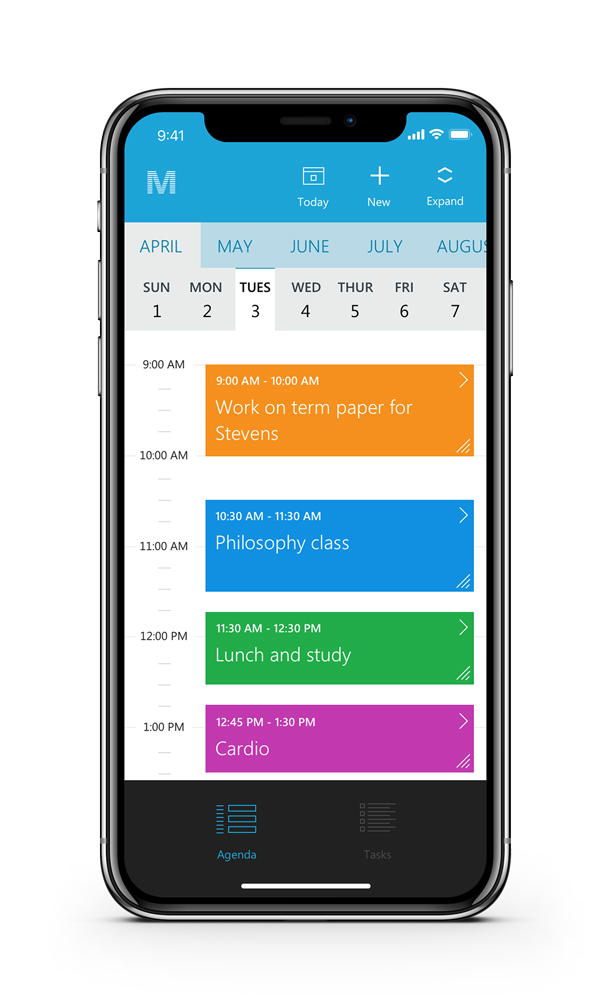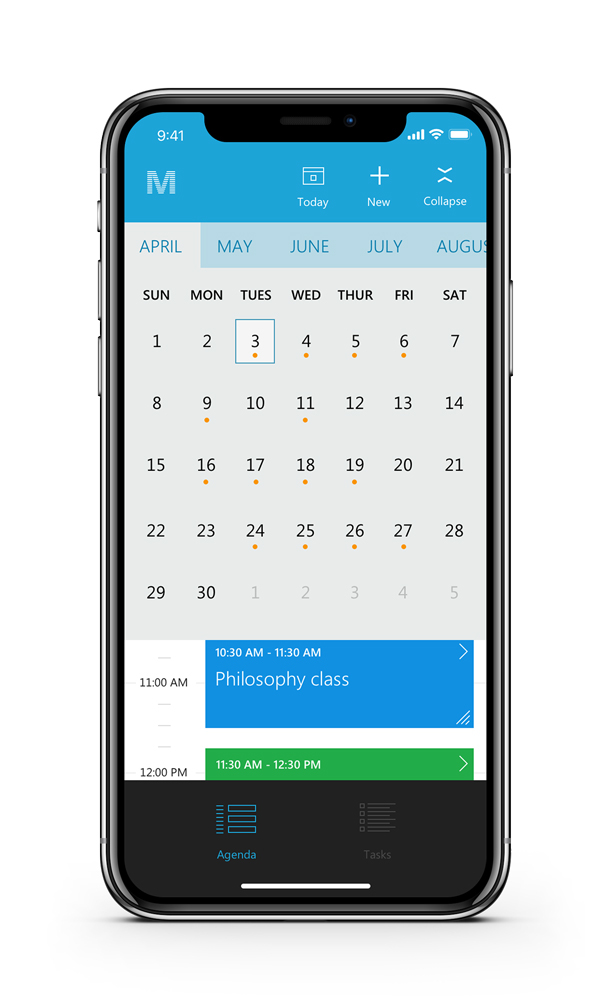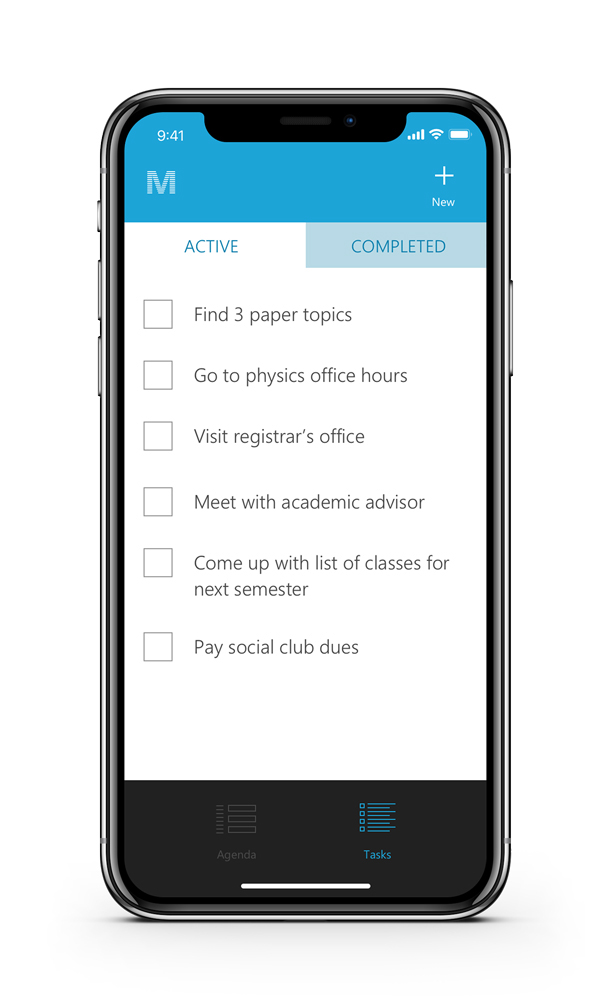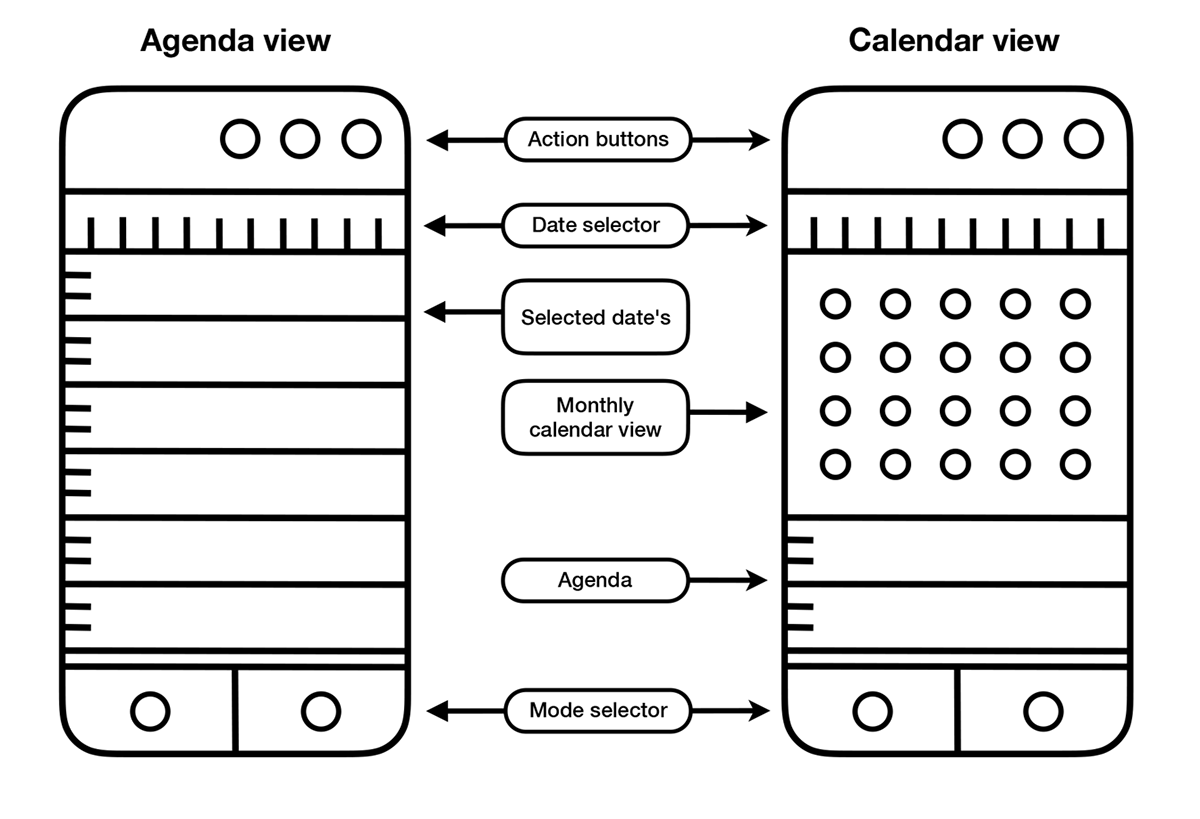2018. Designed simple time management application geared towards students. Proposed as an addition to the suite of Office products, the design of the app adheres to Microsoft design and UI guidelines. Primary goal with app is quick input. Traditional calendar applications require the user to complete a relatively long thread of action before an activity is created.

The agenda screen provides a quick glance at a user’s day. The user can quickly input an activity by tapping anywhere on the schedule or by tapping the “New” icon on the toolbar. Once an activity is created, it can be resized and moved freely around the agenda.

The user can also edit more details of the activity if desired.

Expanding the agenda reveals the calendar, which the user can navigate through to schedule future activities.

A tasks panel is also included with the app, where unscheduled activities may be placed and managed.
Project Background
During my time in school, one technique I used for staying organized was to schedule tasks throughout the day in order to have a better visual representation of everything that needed to be accomplished. I would break down each relevant tasks into smaller sub-tasks, and relegate these sub-tasks to an allotted time period. Although there was no shortage of tasks organization apps available, I found most of them to be too cumbersome and not simple enough to use. I found that just having a small ruled notebook to write out my schedule was sufficient as it gave me the ability to quickly lay out my schedule for the day.
This concept was an exercise in experimenting with the combination of my analog organizational method with the idea of a simplified task scheduler app. The app was imagined as a Microsoft product as a way to explore the possibilities of app design within a set of established design guidelines.
Problems:
-Takes too long to input a task
-Calendar apps require too much information
-Evernote and other note based apps do not allow for an adequate visualization of tasks that need to be done
General goals:
-Create easy way to visualize all tasks that need to be completed
-Make the input process as quick as possible
-Establish input minimum with the ability to provide more detail if necessary


Framework
User needs:
-Quick input
-Easy way to view schedule
-Easy way to edit/manipulate schedule
-Ability to add tasks
-Option to add additional information if needed
-Functional specifications/ content requirements
The majority of all content will be input by the user, how can this information be adequately managed?
How can this be done quickly? The following needs to be considered
-Having input options available as soon app is open
-Having immediate availability of date/time selection
What components should the start screen contain?
-View of today’s agenda
-Ability to quickly select an alternative date from today
-Ability to toggle between scheduled and unscheduled tasks
-Toggle between expanded and collapsed calendar view
Interface design
Example wireframes:


Visual design
The visual design of the app is informed by Microsoft’s Fluent Design System (https://docs.microsoft.com/en-us/windows/uwp/design/basics/). Creating the interface along these guidelines is what informed the specific look and feel for the elements of the app. This was done in order to make the app consistent with the look and feel of other Microsoft apps that follow these guidelines.


